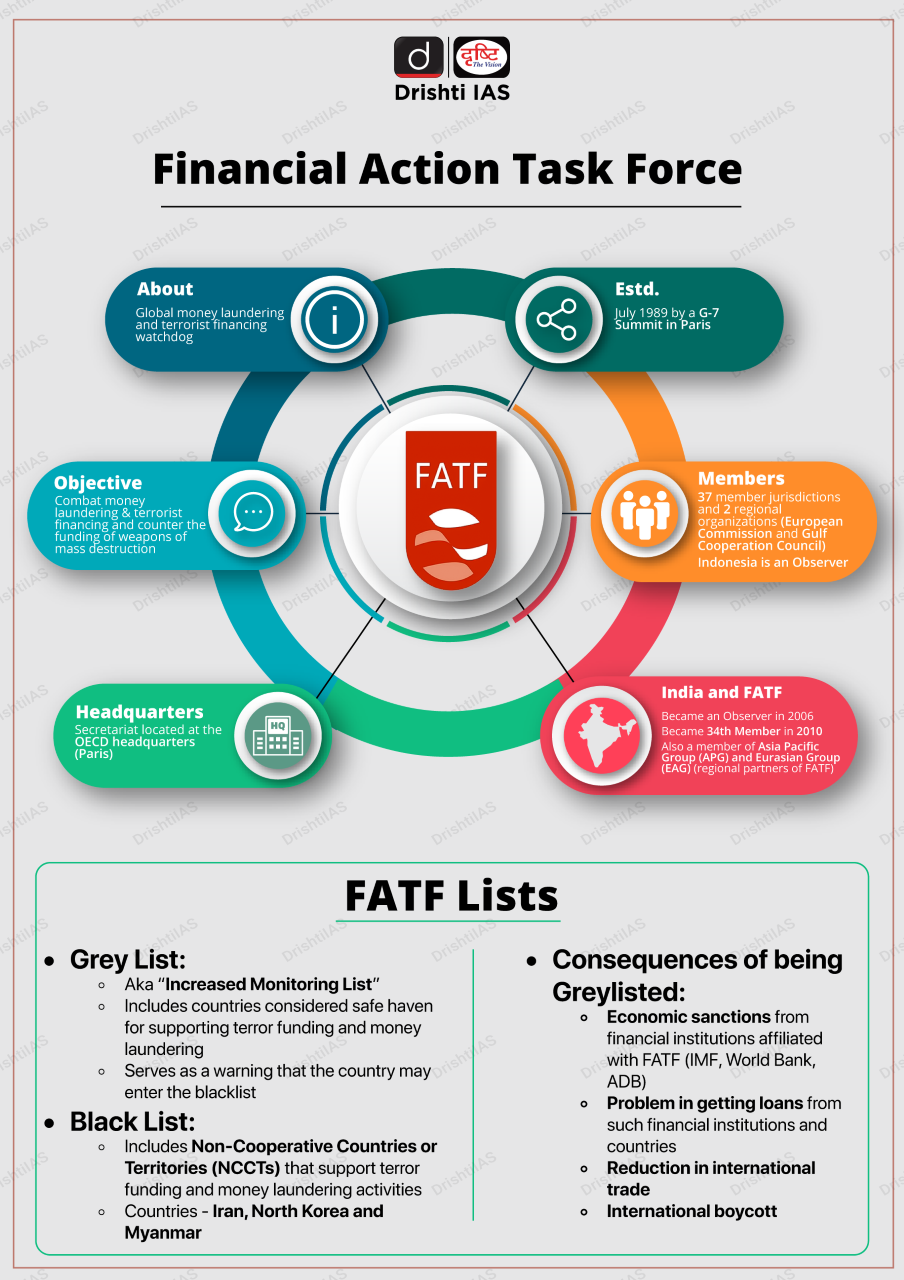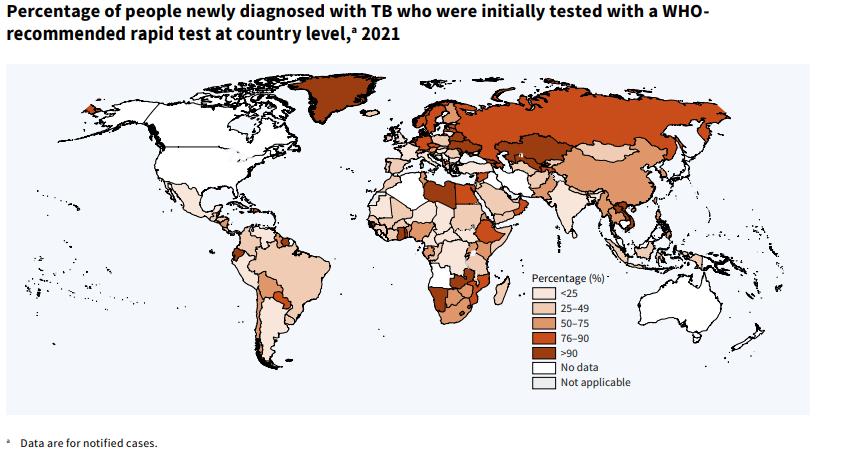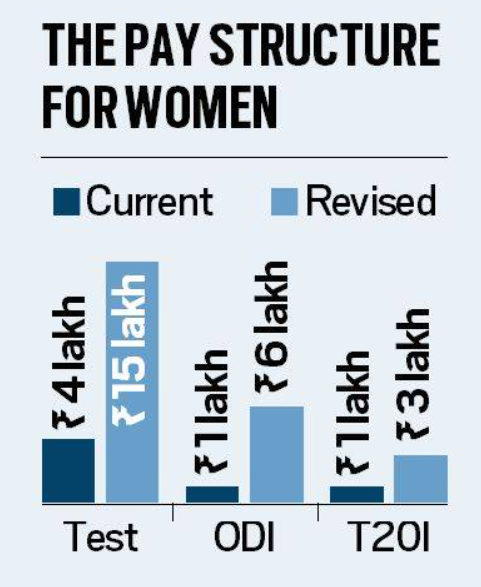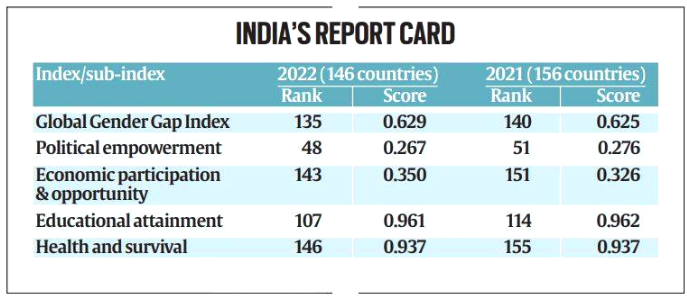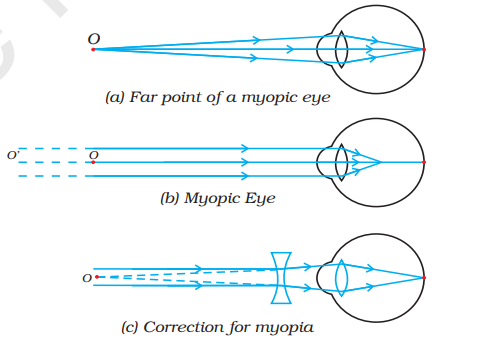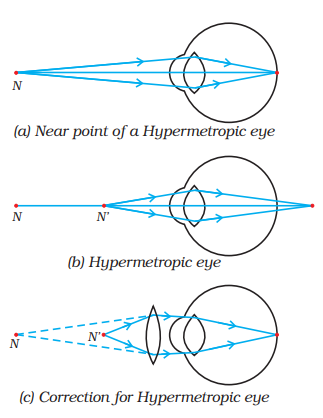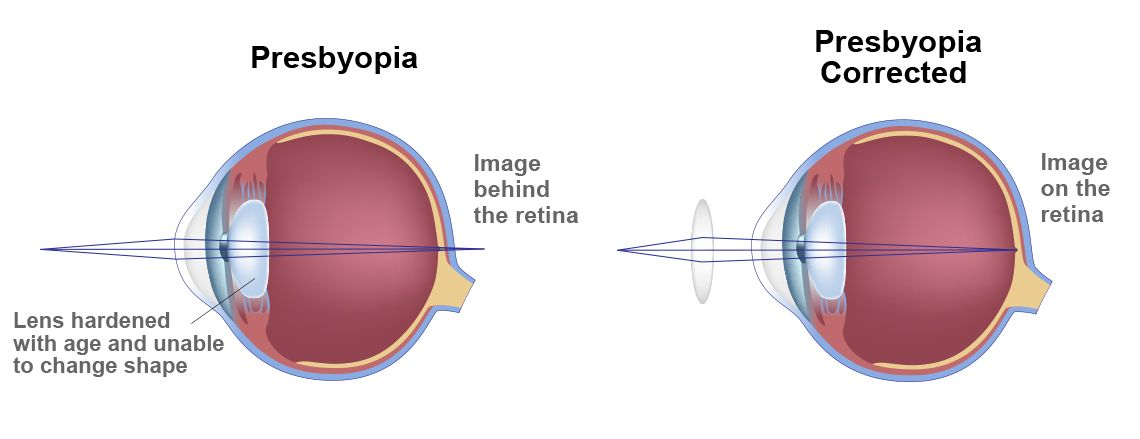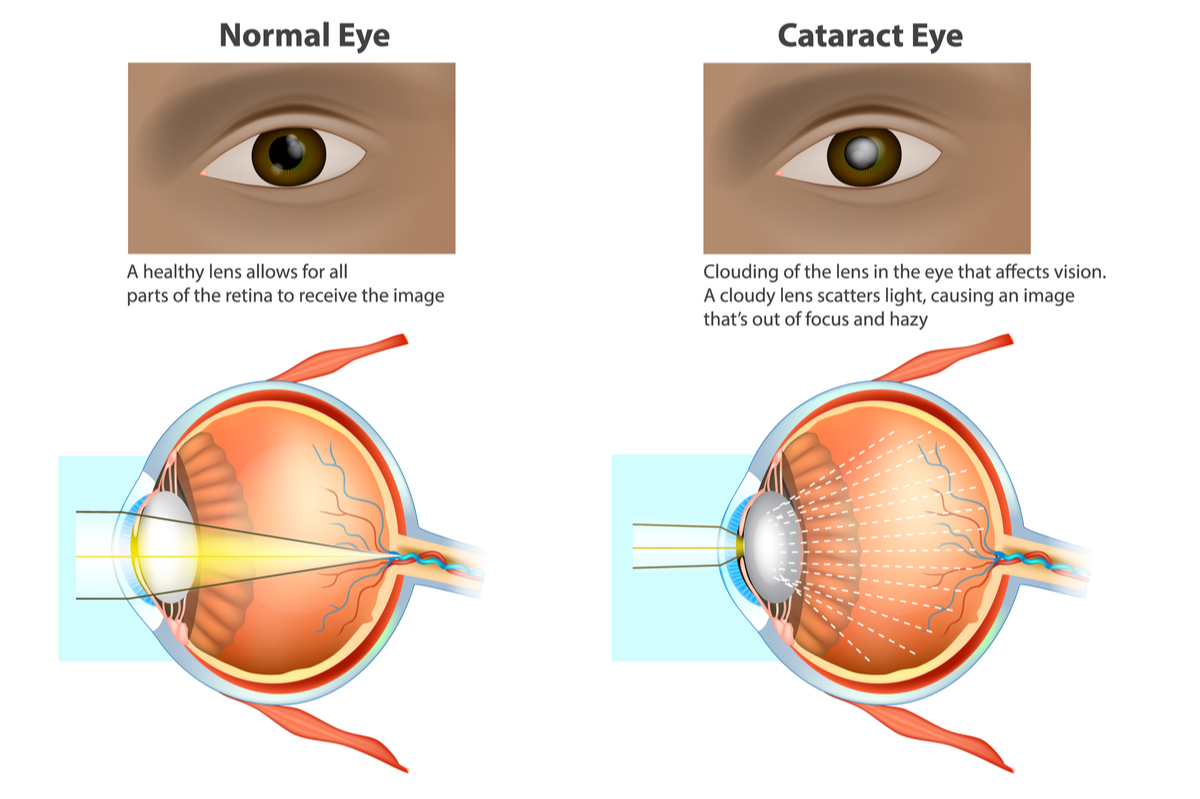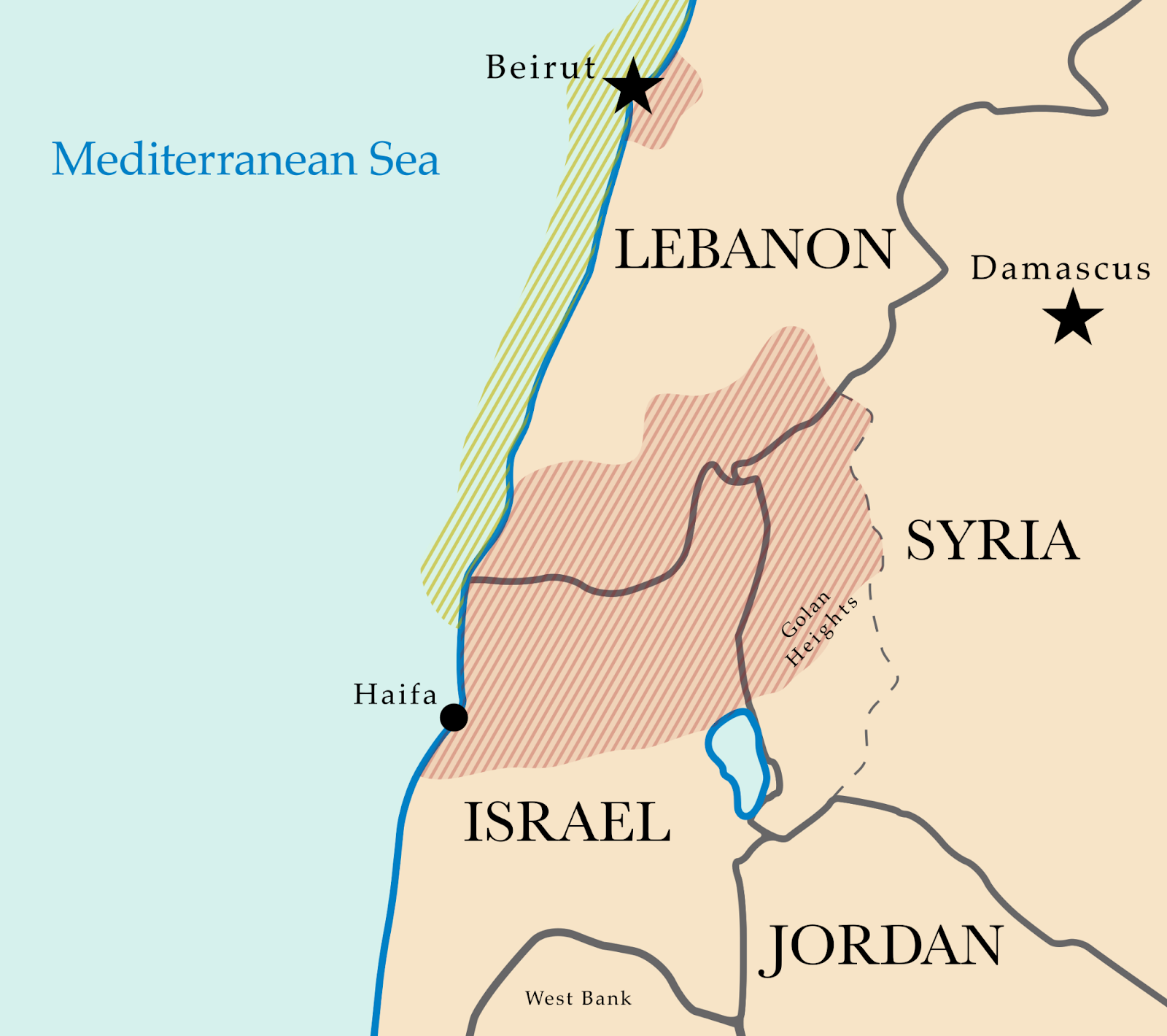Infographics
Internal Security
UNSC Counter-Terrorism Committee Meeting
For Prelims: United Nations, FATF, Mumbai Attack Crypto Currency, UNODC.
For Mains: Challenges to Terrorism and initiative to Counter-Terrorism.
Why in News?
Recently, India has hosted a special meeting of the United Nations Security Council’s Counter Terrorism Committee (CTC) to discuss terror-financing through crypto-currency and use of drones in the new-age terrorism.
- This will be the first such meeting of the UNSC-CTC in India since its establishment in 2001. The Permanent Representative of India (Ruchira Kamboj) to the UN (United Nations) serves as the Chair of the CTC for 2022.
- Theme: Countering the use of new and emerging technologies for terrorist purposes.
What is UNSC-CTC?
- It was established by Security Council resolution 1373 which was adopted unanimously on 28th September 2001 in the wake of the 9/11 terror attacks in the US.
- The Committee comprises all 15 Security Council member.
- Five permanent members: China, France, Russian Federation, the United Kingdom, and the United States, and ten non-permanent members elected for two-year terms by the General Assembly.
- The Committee was tasked with monitoring implementation of resolution 1373 which requested countries to implement a number of measures aimed at enhancing their legal and institutional ability to counter terrorist activities at home and around the world.
- This includes taking steps to criminalize the financing of terrorism, freezing any funds related to persons involved in acts of terrorism, deny all forms of financial support for terrorist groups, suppress the provision of safe haven, sustenance or support for terrorists and share information with other governments on any groups practicing or planning terrorist acts.
What are the Highlights of the Meet?
- India listed five points for the consideration of the CTC,
- Effective and sustained efforts to counter terror-financing.
- Normative efforts of the UN need to be coordinated with other fora like the Financial Action Task Force (FATF).
- Make sure that the Security Council’s sanctions regime is not rendered ineffective because of political reasons.
- International cooperation and concerted actions against terrorists and their sponsors including the dismantlement of terrorist safe havens, etc. are critical imperatives.
- Recognise these linkages and strengthen multilateral efforts to break against terrorism’s nexus with a transnational organised crime like arms and illicit drug trafficking.
What are Emerging Challenges for India?
- Use of emerging technologies for spreading terror is an issue of increasing concern across the globe.
- While one of the terrorists of 26/11 strike was captured alive, prosecuted, and convicted by the Supreme Court in India, the key conspirators and planners of the 26/11 attacks continue to remain protected and unpunished.
- China’s putting a hold on UNSC sanctions against Pakistan-based terrorists on multiple occasions weaken the Security Council to act in some cases.
- Over the years, terrorist groups have diversified their funding portfolio. They have also begun to exploit the anonymity of new and emerging technologies such as virtual currencies for fund-raising and finances.
- Pakistan was put on the FATF’s so-called grey list in June 2018 for a lax regime in countering money laundering and terror funding. The FATF removed Pakistan after more than four years at the plenary in October 2022.
- Discussion over the delisting of Pakistan from last year coincided with a trend of rising terror attacks in Kashmir.
What is Terrorism?
- About:
- Any person who commits an offense, with the purpose of the conduct is to intimidate a population or to compel a Government or an international organization to do or abstain from doing any act, which causes:
- Death or serious bodily injury to any person; or
- Serious damage to public or private property, including a place of public use, a State or government facility, a public transportation system, an infrastructure facility or the environment; or
- Damage to property, places, facilities, or systems resulting in or likely to result in a major economic loss.
- Any person who commits an offense, with the purpose of the conduct is to intimidate a population or to compel a Government or an international organization to do or abstain from doing any act, which causes:
- Indian Initiatives to Tackle Terrorism:
- In the wake of the terror attack, several steps were initiated to streamline the security set-up.
- Coastal security was given high priority, and it is with the Navy/Coast Guard/marine police.
- A specialised agency to deal with terrorist offences, the National Investigation Agency, was set up and has been functioning from January 2009.
- The National Intelligence Grid (NATGRID) has been constituted to create an appropriate database of security-related information.
- Four new operational hubs for the National Security Guard have been created to ensure rapid response to terror attacks.
- The Multi-Agency Centre, which functions under the Intelligence Bureau, was further strengthened and its activities expanded.
- The Navy constituted a Joint Operations Centre to keep vigil over India’s extended coastline.
- Global Efforts:
- The United Nations Office of Counter-Terrorism (UNOCT) leads and coordinates an all-of-UN approach to prevent and counter-terrorism and violent extremism.
- UN Counter-Terrorism Centre (UNCCT) under UNOCT, promotes international cooperation in the fight against terrorism and supports the Member States in implementing the Global Counter-Terrorism Strategy.
- The Terrorism Prevention Branch (TPB) of the United Nations Office on Drugs and Crime (UNODC) plays a significant role in international efforts.
- It works to assist the Member States, upon request, with the ratification, legislative incorporation and implementation of the universal legal framework against terrorism.
- The Financial Action Task Force (FATF) which is a global money laundering and terrorist financing watchdog, sets international standards that aim to prevent these illegal activities and the harm they cause to society.
- The United Nations Office of Counter-Terrorism (UNOCT) leads and coordinates an all-of-UN approach to prevent and counter-terrorism and violent extremism.
Way Forward
- An essential aspect of combating terrorism is to curb terror financing effectively.
- Objective and evidence-based proposals for listing of terrorist groups, especially those that curb their access to financial resources, must be seen through.
- The international community should rise above political differences and defeat the challenge of terrorism.
- Technical solutions are necessary to augment and complement the traditional methods of border guarding. They not only enhance the surveillance and detection capabilities of the border guarding forces but also improve the impact of the border guarding personnel against infiltration and trans-border crimes.
- India should move in the direction of specialisation of military to fight cross-border terrorism.
- Military should also look at alternative means to strike at the terror camps across the LoC and LAC through mechanisms like Precision Engagement Capability.
- A judicious mix of properly trained manpower and affordable and tested technology is likely to yield better results.
- War against terrorism is a low intensity conflict or localized war and cannot be waged without the full and unstinted support of the society and can be lost easily if the morale and resolve of the society to fight against terrorism falters.
UPSC Civil Services Examination, Previous Year Questions
Q. The scourge of terrorism is a grave challenge to national security. What solutions do you suggest to curb this growing menace? What are the major sources of terrorist funding? (2017)
Biodiversity & Environment
2022 Forest Declaration Assessment
For Prelims: COP-26, Deforestation, Indian Forest Policy, 1952, Forest Conservation Act, 1980.
For Mains: Findings of 2022 Forest Declaration Assessment and Recommendations.
Why in News?
Recently, the 2022 Forest Declaration Assessment was published, showing that the Deforestation rates worldwide declined only modestly in 2021 by 6.3 % compared to the 2018-20 baseline.
- Some 145 countries affirmed their commitment to halt and reverse forest loss and land degradation by 2030 at the 26th UN Climate Change Conference of the Parties (COP26) in Glasgow (2021).
- Forest Declaration Assessment publishes annual updates on progress toward global forest goals.
- In 2014, the New York Declaration on Forests (NYDF) was adopted as a political declaration calling for the end of natural forest loss and the restoration of 350 million hectares of degraded landscapes and forestlands by 2030.
What are the Findings?
- Overview
- Not a Single Global Indicator is on Track' to Reverse Deforestation by 2030.
- To be on course to halt deforestation completely by 2030, a 10% annual reduction is needed.
- While afforestation and restoration efforts have been commendable, more forest area is being lost than gained.
- Global forest loss decreased in 2021, but the crucial climate goal of stopping deforestation by 2030 would still be missed.
- Contributors to Deforestation:
- Brazil was the world’s largest contributor to deforestation in 2021.
- The country marked a 3% rise in the rate of deforestation in 2021 compared to the baseline 2018-2020.
- Although Brazil didn’t show a large increase, its total deforestation rates each year remained high — making it the world’s largest contributor.
- Bolivia and the Democratic Republic of the Congo underwent deforestation at 6 % and 3 %, respectively.
- Brazil was the world’s largest contributor to deforestation in 2021.
- Gain in Tree Cover:
- Global tree cover increased by 130.9 million hectares over the past two decades.
- Three-quarters of the global gain was concentrated in 13 countries.
- The most significant improvements were observed in Russia (28.4 %), Canada, the United States, Brazil, and China.
- China showed the largest net gain in tree cover — 2.1 million hectares (Mha). India also marked a gain of 0.87 Mha in tree cover.
- Globally, 118.6 Mha of the total tree cover gain is likely due to natural regeneration and assisted natural regeneration that occurred outside plantations.
- Reduction in Deforestation:
- Gabon reduced deforestation by 28% in 2021 compared to 2018-20.
- The country implemented measures to combat illegal logging and the enforcement of protected areas.
- Indonesia reduced deforestation after implementing the forest moratorium and improved enforcement measures.
- The moratorium, which covers around 66 million hectares of primary forest and peatland (terrestrial wetland ecosystems), was first introduced in 2011 and has been renewed regularly as part of the efforts to reduce emissions from fires caused by deforestation.
- In Brazil, the decline in deforestation rates between 2004 and 2012 can be partly attributed to the coordinated implementation of the Action Plan for the Prevention and Control of Deforestation in the Amazon.
- It created protected areas and effective monitoring systems.
- Recent years have seen legal interventions in the European Union, Ecuador and India to protect forests.
- In 2021, a constitutional court in Ecuador upheld the rights of nature enshrined in the country’s constitution.
- Gabon reduced deforestation by 28% in 2021 compared to 2018-20.
- Recommendation:
- It is essential to note that tree cover gain does not cancel out tree loss.
- Forest cover gains don’t negate the impacts of forest loss in terms of carbon storage, biodiversity, or ecosystem services. The highest priority efforts should be directed towards safeguarding primary forests from losses in the first place.
- Forest finance needs to be on track to meet global goals to halt and reverse deforestation by 2030.
- It will cost up to USD 460 billion per year to protect, restore and enhance forests on a global scale.
- Currently, domestic and international mitigation finance for forests averages USD 2.3 billion per year — less than 1 % of the required.
- Forest funding must increase by up to 200 times to meet 2030 goals.
- Forests are the backbone of our economies and crucial to our wellbeing. It is now more important than ever to speed up action and concerted efforts to halt deforestation and scale up restoration in a way that benefits people, nature and climate.
- This means more ground-up inclusive solutions, stronger collaboration and coordination among the public and private sectors and the civil society, and moving from commitments to implementation.
What is Deforestation?
- About:
- Deforestation is the permanent removal of trees to make room for something besides forest. This can include clearing the land for agriculture or grazing, or using the timber for fuel, construction or manufacturing.
- Today, most deforestation is happening in the tropics.
- Effect:
- Deforestation in tropical regions can also affect the way water vapor is produced over the canopy, which causes reduced rainfall.
- Deforestation not only removes vegetation that is important for removing carbon dioxide from the air, but the act of clearing the forests also produces greenhouse gas emissions.
- It is also causing loss of biodiversity and animal life.
- Indian Initiatives:
- Indian Forest Policy, 1952
- Forest Conservation Act, 1980
- National Forest Policy, 1988
- National Afforestation Programme.
- Wildlife Protection Act of 1972
- Environment Protection Act of 1986
- Biodiversity Diversity Act of 2002.
- Scheduled Tribes and Other Traditional Forest Dwellers (Recognition of Forest Rights) Act, 2006.
UPSC Civil Services Examination, Previous Year Questions
Q. In India, the problem of soil erosion is associated with which of the following? (2014)
1. Terrace cultivation
2. Deforestation
3. Tropical climate
Select the correct answer using the code given below
(a) 1 and 2 only
(b) 2 only
(c) 1 and 3 only
(d) 1, 2 and 3
Social Issues
World Tuberculosis Report 2022: WHO
For Prelims: Tuberculosis, World TB Report, World Health Organisation, PM TB Mukt Bharat Abhiyan, BCG Vaccine, DR-TB, MDR-TB.
For Mains: India’s performance in World TB Report, Challenges to eliminating TB, India’s progress in eliminating TB
Why in News?
The World Health Organisation (WHO) recently released the World Tuberculosis Report 2022 noting the impact of Covid-19 pandemic on the diagnosis, treatment and burden of disease for Tuberculosis (TB) all over the world.
- The 2022 report features data on trends of disease and the response to the epidemic from 215 countries and areas, including all 194 WHO member states.
What are the Key Findings of the Report?
- Diagnosis and Mortality Globally:
- Around 10.6 million people across the world were diagnosed with TB in 2021, an increase of 4.5% from 2020, while 1.6 million patients died of the disease.
- Of the total TB deaths, 187,000 patients were also positive for HIV (human immunodeficiency virus).
- Nearly 82% of global TB deaths among HIV-negative people occurred in the African and South-East Asia regions.
- The reported number of people newly diagnosed with TB fell from 7.1 million in 2019 to 5.8 million in 2020.
- There was a partial recovery to 6.4 million in 2021, but this was still well below pre-pandemic levels.
- India and TB:
- With 28% cases, India was among the eight countries accounting for more than two-third (68.3%) of the total TB patients’ count.
- The other countries were Indonesia (9.2% cases), China (7.4%), the Philippines (7%), Pakistan (5.8%), Nigeria (4.4%), Bangladesh (3.6%) and the Democratic Republic of the Congo (2.9%).
- India accounted for 36% of the global TB related deaths among HIV negative people.
- India was among the three countries (along with Indonesia and the Philippines) that accounted for most of the reduction in 2020 (67% of the global) and made partial recoveries in 2021.
- India’s Stand on the Report: India has performed far better on major metrics as compared to other countries over time.
- India’s TB incidence for the year 2021 is 210 per 100,000 population – compared to the baseline year of 2015 (which was 256 per 100,000 population).
- There has been an 18% decline (7 percentage points); better than the global average of 11% placing India at the 36th position in terms of incidence rates.
- With 28% cases, India was among the eight countries accounting for more than two-third (68.3%) of the total TB patients’ count.
- Major Challenges to TB Elimination:
- Rise in Drug-Resistant TB:
- The burden of drug-resistant TB (DR-TB) increased by 3% globally between 2020 and 2021, with 450,000 new cases of rifampicin-resistant TB (RR-TB) being reported in 2021.
- Rise in Drug-Resistant TB:
- Disruptions due to Covid-19:
- This is the first time in several years that an upward trend has been reported in the number of people developing both TB and DR-TB. Experts attribute this trend to the Covid-19 pandemic.
- Many services were disrupted by the Covid-19 in 2021 but its impact on the TB response has been particularly severe.
- Underreporting - A Major Concern:
- Ten countries collectively accounted for 75% of the global gap between estimated TB incidence and the reported number of people newly diagnosed with the disease. These gaps are due to:
- Underreporting (of people diagnosed with TB)
- Underdiagnosis (people with TB being unable to access health care or not being diagnosed when they do).
- Underreporting is more of a problem in India; the country is among the top five contributors - India (24%), Indonesia (13%), the Philippines (10%), Pakistan (6.6%) and Nigeria (6.3%).
- Ten countries collectively accounted for 75% of the global gap between estimated TB incidence and the reported number of people newly diagnosed with the disease. These gaps are due to:
- Decline in Diagnosis and Expenditure:
- Reductions in the reported TB cases suggest an increase in the number of people with undiagnosed and untreated TB.
- The number of people provided with treatment for RR-TB and multidrug-resistant TB (MDR-TB) also declined between 2019 and 2020.
- The reported number of people receiving treatment for RR-TB in 2021 was 161,746, which is only about one in three of those in need.
- The report also notes a decline in global spending on essential TB services from US$6 billion in 2019 to US$5.4 billion in 2021, which is less than half of the global target of US$13 billion annually by 2022.
What is Tuberculosis?
- About:
- TB is caused by a bacterium called Mycobacterium tuberculosis, belonging to the Mycobacteriaceae family consisting of about 200 members.
- In humans, TB most commonly affects the lungs (pulmonary TB), but it can also affect other organs (extra-pulmonary TB). It can spread from person to person through the air.
- Most people who develop the disease are adults — in 2021, men accounted for 56.5% of the TB burden, adult women - 32.5% and children - 11%.
- TB is preventable and curable - around 85% of people who develop the disease can be successfully treated with a 4/6-month drug regimen.
- India’s Initiatives to Eliminate TB:
- Under the Pradhan Mantri TB Mukt Bharat Abhiyan, India aims to eliminate TB from the country by 2025 (5 years earlier than the global target of 2030).
- Ni-kshay Mitra is a component of this initiative that ensures additional diagnostic, nutritional, and vocational support to those on TB treatment.
- India conducts its own National TB Prevalence Survey to assess the true TB burden in the country which is the world’s largest such survey ever conducted.
- The Union Ministry for Health and Family Welfare also launched the ‘TB Harega Desh Jeetega Campaign’, along with the Survey.
- Currently, two vaccines VPM (Vakzine Projekt Management) 1002 and MIP (Mycobacterium Indicus Pranii) have been developed and identified for TB which are under clinical trials.
- Under the Pradhan Mantri TB Mukt Bharat Abhiyan, India aims to eliminate TB from the country by 2025 (5 years earlier than the global target of 2030).
- Note:
- The World Tuberculosis (TB) Day is observed on 24th March to spread awareness about the disastrous health, social, and economic consequences of TB and to make efforts to end the TB epidemic globally.
- The Bacille Calmette-Guérin (BCG) vaccine is presently the sole vaccine available for the prevention of TB.
Way Forward
- The report reiterates its call for countries to put in place urgent measures to restore access to essential TB services.
- It further calls for increased investments, multi-sectoral action to address the broader determinants that influence TB epidemics and their socioeconomic impact as well as the need for new diagnostics, drugs and vaccines.
- For the TB mitigation strategy to be effective, it is important to increase levels of awareness of people about the disease and ensure that the people affected by TB overcome their social insecurities and access TB care.
Indian Polity
Office of Profit
For Prelims: Office of Profit, Election Commission, Representation of the People Act, Supreme Court, Article 102 (1), Article 191 (1), Article 164 (4), High Court
For Mains: Office of Profit and related Constitutional Provisions
Why in News?
Recently, Jharkhand chief minister who was an accused of holding an office of profit, pleaded to government to make his crime public as well as grant him punishment at the earliest.
What is the Concept of ‘Office of Profit’?
- Members of Parliament (MPs) and Members of Legislature (MLAs), as members of the legislature, hold the government accountable for its work.
- The essence of disqualification under the office of profit law is if legislators hold an ‘office of profit’ under the government, they might be susceptible to government influence, and may not discharge their constitutional mandate fairly.
- The intent is that there should be no conflict between the duties and interests of an elected member.
- Hence, the office of profit law simply seeks to enforce a basic feature of the Constitution- the principle of separation of power between the legislature and the executive.
What Constitutes an ‘Office of Profit’?
- About:
- The law does not clearly define what constitutes an office of profit but the definition has evolved over the years with interpretations made in various court judgments.
- An office of profit has been interpreted to be a position that brings to the office-holder some financial gain, or advantage, or benefit.
- The amount of such profit is immaterial.
- In 1964, the Supreme Court ruled that the test for determining whether a person holds an office of profit is the test of appointment.
- Factors which are considered in this determination includes:
- Whether the government is the appointing authority
- Whether the government has the power to terminate the appointment
- Whether the government determines the remuneration
- What is the source of remuneration
- Power that comes with the position
What does the Constitution say about holding an ‘Office of Profit’?
- Under Article 102 (1) and Article 191 (1) of the Constitution, an MP or an MLA (or an MLC) is barred from holding any office of profit under the central or state government.
- The articles clarify that “a person shall not be deemed to hold an office of profit under the government of India or the government of any state by reason only that he is a minister”.
- Provisions of Articles 102 and 191 also protect a legislator occupying a government position if the office in question has been made immune to disqualification by law.
- Parliament has also enacted the Parliament (Prevention of Disqualification) Act, 1959, which has been amended several times to expand the exempted list.
What are the Related Judgments of the Supreme Court?
- CM will be disqualified under Section 9A of the Representation of Peoples’ Act, 1951 in view of three judgments of the apex court.
- Under that section, a contract has to be made for the supply of goods or the execution of any work undertaken by the government.
- A constitution bench of the Supreme Court in 1964 in the case of CVK Rao vs Dentu Bhaskara Rao has held that a mining lease does not amount to a contract of supply of goods.
- In 2001, a three-judge bench of the apex court in the case of Kartar Singh Bhadana vs Hari Singh Nalwa & others also made it clear that a mining lease does not amount to execution of a work undertaken by the government.
- Even if the CM is disqualified by any authority, he can challenge it in the high court and in that case and as per a Supreme Court order, the adjudication has to be completed within four months.
- Under Article 164 (4), one person can be a minister for six months without being a member.
UPSC Civil Services Examination, Previous Year Question
Q. Consider the following statements: (2019)
- The Parliament (Prevention of Disqualification) Act, 1959 exempts several posts from disqualification on the grounds of ‘Office of Profit’.
- The above-mentioned Act was amended five times.
- The term ‘Office of Profit’ is well-defined in the Constitution of India.
Which of the statements given above is/are correct?
A. 1 and 2 only
B. 3 only
C. 2 and 3 only
D. 1, 2 and 3
Ans: A
Exp:
- The Parliament (Prevention of Disqualification) Act, 1959 exempts several posts from disqualification, like:
- Ministers of State and Deputy Ministers,
- Parliamentary Secretaries and Parliamentary Under Secretaries,
- Deputy Chief Whips in Parliament,
- Vice-Chancellors of Universities,
- Officers in the National Cadet Corps, and the Territorial Army, and
- Chairman and members of Advisory Committees set up by the Government when they are not entitled to any fee or remuneration other than compensatory, etc. Hence, statement 1 is correct.
- The Act has been amended 5 times, since its formulation, in the years 1960, 1992, 1993, 2006 and 2013. Hence, statement 2 is correct.
- The Constitution of India does not clearly define what constitutes an office of profit, but the definition has evolved over the years with interpretations made in various court judgments. Hence, statement 3 is not correct. Therefore, option (a) is the correct answer.
Indian Economy
Liquidity Adjustment Facility
For Prelims: Liquidity Adjustment Facility (LAF), Monetary policy, Narasimham Committee
For Mains: What is Liquidity Adjustment Facility (LAF)
Why in News?
The Reserve Bank of India (RBI) injected Rs 72,860.7 crore of liquidity into the banking system in October 2022, the highest since April 2019 after liquidity condition tightened on higher demand for credit during the festival season.
- It is the central bank’s intervention in the foreign exchange market to curb volatility in the rupee.
What is Liquidity?
- Liquidity in the banking system refers to readily available cash that banks need to meet short-term business and financial needs.
- On a given day, if the banking system is a net borrower from the RBI under Liquidity Adjustment Facility (LAF), the system liquidity is said to be in deficit. If the banking system is a net lender to the RBI, the liquidity is said to be in surplus.
What is Liquidity Adjustment Facility (LAF)?
- A LAF is a monetary policy tool used in India by the RBI through which it injects or absorbs liquidity into or from the banking system.
- It was introduced as a part of the outcome of the Narasimham Committee on Banking Sector Reforms of 1998.
- LAF has two components - repo (repurchase agreement) and reverse repo. When banks need liquidity to meet its daily requirement, they borrow from RBI through repo. The rate at which they borrow fund is called the repo rate. When banks are flush with fund, they park with RBI through the reverse repo mechanism at reverse repo rate.
- It can manage inflation in the economy by increasing and reducing the money supply.
- LAF is used to aid banks in resolving any short-term cash shortages during periods of economic instability or from any other form of stress caused by forces beyond their control.
- Various banks use eligible securities as collateral through a repo agreement and use the funds to alleviate their short-term requirements, thus remaining stable.
- The facilities are implemented on a day-to-day basis as banks and other financial institutions ensure they have enough capital in the overnight market.
- The transacting of liquidity adjustment facilities takes place via an auction at a set time of the day.
What is Monetary Policy?
- Monetary policy refers to the policy of the central bank with regard to the use of monetary instruments under its control to achieve the goals specified in the Act.
- The primary objective of the RBI’s monetary policy is to maintain price stability while keeping in mind the objective of growth.
- Price stability is a necessary precondition to sustainable growth.
- The amended RBI Act, 1934 also provides for the inflation target (4% +-2%) to be set by the Government of India, in consultation with the Reserve Bank, once in every five years.
- Tools under the Monetary Policy:
UPSC Civil Services Examination, Previous Year Questions
Prelims
Q. The RBI decides to adopt an expansionist monetary policy, which of the following would it not do? (2020)
1. Cut and optimize the Statutory Liquidity Ratio
2. Increase the Marginal Standing Facility Rate
3. Cut the Bank Rate and Repo Rate
Select the correct answer using the code given below:
(a) 1 and 2 only (b) 2 only
(c) 1 and 3 only (d) 1, 2 and 3
Ans: (b)
Exp:
- Expansionary monetary policy, or easy monetary policy, is when a central bank uses its tools to stimulate the economy. It increases the money supply, lowers interest rates, and increases demand. It boosts economic growth.
- Statutory Liquidity Ratio (SLR) is a monetary policy tool that the Reserve Bank of India (RBI) uses to assess the liquidity at the banks’ disposal. It is the minimum percentage of deposits that a commercial bank has to maintain in the form of cash, gold or other securities. It is basically the reserve requirement that banks are expected to keep before offering credit to customers.
- Raising SLR makes banks park more money in government securities and reduce the level of cash in the economy. Doing the opposite helps maintain cash flow in the economy. Reducing SLR leaves more liquidity with banks, which in turn can fuel growth
and demand in the economy. Hence, statement 1 is not correct.
Mains
Q. Do you agree with the view that steady GDP growth and low inflation have left the Indian economy in good shape? Give reasons in support of your arguments. (2019)
Social Issues
Pay Parity in Cricket
For Prelims: Countries & Sports with Equal Pay Parity, Global Gender Gap Index
For Mains: Challenges in bringing equal pay in sports, Key Highlights of Global Gender Gap Index, Government’s Initiatives to Reduce Gender Gap
Why in News?
- Recently, the Board of Control for Cricket in India (BCCI) announced a “pay equity policy”, saying that its centrally-contracted men and women players would get the same match fees.
- The step is a significant move towards bringing gender pay parity as, according to Global Gender Gap Index 2022, at the current rate of progress, it will take 132 years to reach full parity.
What do we know about the Increase in Women Player’s Fee?
- The women players will now get Rs 15 lakh per Test match, Rs 6 lakh for a One-Day International (ODI), and Rs 3 lakh for a T20 International. Till now, they were paid Rs 1 lakh for a white-ball match, and Rs 4 lakh for a Test.
- The annual retainership for women cricketers remains the same — Rs 50 lakh for Grade A, Rs 30 lakh for Grade B and Rs 10 lakh for Grade C.
- The men, who play more games, are paid Rs 1-7 crore, depending on their grade.
Has any Other Country also Implemented Equal Pay in Sports?
- India has become only the second country in international cricket to implement equal pay.
- New Zealand Cricket (NZC), in 2022, had struck a deal with the country's players' association, which enabled the women cricketers to earn as much as the male players.
- This comes four months after the United States’ women’s national footballers won the six-year-long battle with their federation to secure equal compensation.
- Tennis has made moves to increase equal pay between their male and female players, and today all four major tennis tournaments (Australian Open, Roland Garros, Wimbledon and US Open) offer equal prize money.
What are the Challenges in Bringing Gender Pay Parity in Sports?
- Revenue Generation:
- The argument is that the returns generated by male players are higher than what women generate.
- While assessing the monetary benefits in sports, a few things are considered, including endorsements, sports merchandising and ticket sales, among others. However, this is based on the viewership and fanbase, which is, in turn, influenced by the androcentric nature of sports.
- Women’s entry into sports happened much later than men due to societal restrictions. This has resulted in a lower ‘entertainment value’ of women’s sport.
- Differential Performance:
- This argument states that since men are ‘stronger’ and can perform better in sports than women, they should be paid a higher amount.
- In professional tennis, men play five sets per match and women play three sets per match, a rule based on the assumption that women are physically weaker than men.
- Despite women’s demonstrated willingness and capability to play five sets, decision-makers (who were mostly men) believed that the quality of the game would deteriorate if women played five sets.
- Representation Issues:
- The weak representation of women in sports governance structures is also a cause of the persistence of the pay gap in the sport industry. Female representation in some governance structures has improved, but this has only happened recently. Further, most of the governing bodies still need a stronger push to enhance female membership.
What is the Key Revelation of Global Gender Gap Index 2022?
- About:
- Global Gender Gap Index benchmarks countries on their progress towards gender parity in four Key dimensions with Sub Metrices namely:
- Economic Participation and Opportunity, Educational Attainment, Health and Survival, Political Empowerment.
- Global Gender Gap Index benchmarks countries on their progress towards gender parity in four Key dimensions with Sub Metrices namely:
- India’s performance:
- India has been ranked at 135, out of a total of 146 countries.
- India’s overall score has improved from 0.625 (in 2021) to 0.629, which is its seventh-highest score in the last 16 years.
- In 2021, India was ranked 140 out of 156 countries.
- Economic Participation and Opportunity (Percentage of women in labour force, Wage Equality for similar work, Earned income):
- India ranks a lowly 143 out of the 146 countries in contention even though its score has improved over 2021 from 0.326 to 0.350.
- In 2021, India was pegged at 151 out of the 156 countries.
- India’s score is much lower than the global average, and only Iran, Pakistan and Afghanistan are behind India on this metric.
What are the Indian Initiatives to reduce Gender Gap in Social, Economic and Political Life?
- Economic Participation and Health and Survival:
- Political Reservation:
- Government has reserved 33% of the seats in Panchayati Raj Institutions for women.
- Capacity Building of Elected Women Representatives:
- It is conducted with a view to empowering women to participate effectively in the governance processes.
UPSC Civil Services Examination, Previous Year Questions
Prelims:
Q. Which of the following gives ‘Global Gender Gap Index’ ranking to the countries of the world? (2017)
(a) World Economic Forum
(b) UN Human Rights Council
(c) UN Women
(d) World Health Organization
Ans: (a)
Exp:
- The Global Gender Gap Report is published by the World Economic Forum. The report’s Gender Gap Index, which is designed to measure gender equality ranks countries, according to the calculated gender gap between women and men in four key areas: health, education, economy and politics to gauge the state of gender equality in a country.
- The Global Gender Gap Report 2021 benchmarks 156 countries on their progress towards gender parity across four thematic dimensions: Economic Participation and Opportunity; Educational Attainment, Health and Survival, and Political Empowerment. In addition, this year’s edition studied skills gender gaps related to Artificial Intelligence (AI).
- India ranks 140th in WEF Gender Gap Index-2021.
- Therefore, option (a) is the correct answer.
Mains:
- Q. Can the vicious cycle of gender inequality, poverty and malnutrition be broken through microfinancing of women SHGs? Explain with examples. (2021)
- Q. How does patriarchy impact the position of middle-class working women in India? (2014)
Important Facts For Prelims
World Sight Day
Why in News?
World Sight Day is observed globally on the second Thursday of every October.
- This year, World Sight Day is being observed on 13th October to draw attention to the issue of blindness and vision impairment among people.
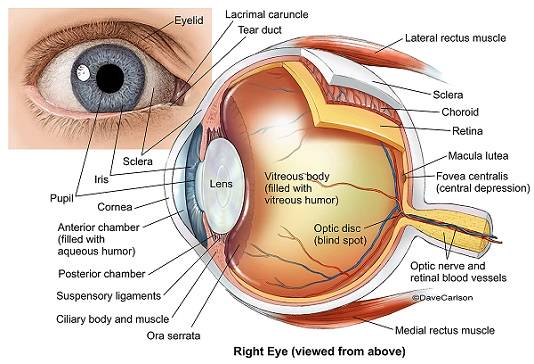
Why do we Celebrate World Sight Day?
- History:
- The day was first observed by the SightFirst campaign of the Lions Club International organisation in the year 2000.
- Since then, it has been integrated into the VISION 2020: The Right to Sight (V2020) plan.
- The V2020 plan which was launched in 1999 is coordinated by the International Agency for the Prevention of Blindness (IAPB) in cooperation with the World Health Organization (WHO).
- Theme for 2022: ‘Love your eyes’
- Significance:
- This day is significant because there are more than a billion people across the globe who cannot see properly as they do not have access to glasses. Out of them, one billion people are suffering with preventable vision impairment.
- Poor or lost eyesight leave long-lasting effects on every aspect of life, such as on daily personal activities, school & work, daily routine and interacting with the community.
What are the Different Defects of Vision?
- Myopia or Near-Sightedness:
- In this condition, the person can see the objects nearby but cannot see distant objects clearly.
- Faraway objects appear blurry, and a person will not be comfortable seeing them.
- Myopia occurs when the shape of the eyes causes light rays to bend in the wrong direction, focusing images in front of the retina rather than on it.
- Myopic eye defect can be corrected by using concave lens.
- Hypermetropia or Far-Sightedness:
- Hypermetropia is commonly known as far-sightedness and convex lens is used to treat it.
- In this condition, the person can see objects at a distance but cannot see nearby objects clearly.
- Usually, the person with this disorder squints to see nearby objects.
- Hypermetropia is caused when the light rays from a closeby object are focused on a point behind the retina.
- Presbyopia:
- Presbyopia is the gradual loss of the eyes' ability to focus on nearby objects.
- The symptoms of presbyopia usually begin around the age of 40 and worsen until around 65.
- To correct this defect, a person is prescribed bifocal lens that has both types of lenses - convex and concave.
- Cataract:
- It is the medical condition in which the lens of the eye of a person becomes progressively cloudy resulting in blurred vision. It can be treated by Surgery.
- Cataract develops when the eye-lens of a person becomes cloudy (or even opaque) due to the formation of a membrane over it. Cataract decreases the vision of the eye gradually.
Important Facts For Prelims
Israel-Lebanon: Maritime Border Deal
Why in News?
Recently, Israel and Lebanon signed a U.S.-brokered Maritime Border Deal which paves the way for lucrative offshore gas extraction by the neighbors that remain technically at war.
What is the Deal?
- Background:
- Lebanon and Israel have been officially at war since Israel’s creation in 1948 and both countries claim some 860 square kilometers (330 square miles) of the Mediterranean Sea.
- There have been decade old tensions between Israel and Lebanon’s competing claims over offshore gas fields in the region, which contains part of the Karish gas field and Qana, a prospective gas field.
- The Karish gas field, being developed by Israel, came under threat from Hezbollah, Lebanon’s powerful political and militant group backed by Iran.
- The two countries declared overlapping boundaries in 2011 in the Mediterranean Sea.
- Since both countries have been technically at war, the United Nations was asked to mediate.
- The issue gained significance after Israel discovered two gas fields off its coast a decade ago, which can help turn it into an energy exporter.
- About:
- It resolves a territorial dispute in the eastern Mediterranean Sea, in an area that Lebanon wants to explore for natural gas.
- The gas field is located on the maritime boundary between the two countries and this agreement would allow both countries to get royalties from the gas.
- Under the deal, Israel receives full rights to explore the Karish field.
- Lebanon receives full rights in the nearby Qana field, but it agreed to allow Israel a share of the royalties.
- It sets a border between Lebanese and Israeli waters for the first time, largely along a demarcation referred to as Line 23.
- The agreement does not touch on the shared land border between Israel and Lebanon, which is still disputed.
- This border is also called the Blue Line, a boundary that was drawn up by the UN after Israel withdrew from southern Lebanon in 2000.
- Significance:
- The agreement is also expected to avert the immediate threat of conflict between Israel and Hezbollah militants in Lebanon.
- The agreement will create new sources of energy and income for both countries, particularly important for Lebanon, which is facing a crippling energy and financial crises.
- It can provide Europe with a potential new source of gas amid energy shortages caused by the Russian invasion of Ukraine.
UPSC Civil Services Examination, Previous Year Questions
Q. Consider the following pairs: (2019)
Sea Bordering Country
1. Adriatic Sea : Albania
2. Black Sea : Croatia
3. Caspian Sea : Kazakhstan
4. Mediterranean Sea : Morocco
5. Red Sea : Syria
Which of the pairs given above are correctly matched?
(a) 1, 2 and 4 only
(b) 1, 3 and 4 only
(c) 2 and 5 only
(d) 1, 2, 3, 4 and 5
Ans: (b)
Exp:
- The Adriatic Sea is a part of the Mediterranean Sea positioned between the eastern coastline of Italy, and countries of the Balkan Peninsula, from Slovenia, through Croatia, Bosnia and Herzegovina, Montenegro, and to Albania. Hence, pair 1 is correctly matched.
- The Black Sea is an inland sea located between far southeastern Europe and the far western edges of the continent of Asia and the country of Turkey. It is bordered by Turkey, Bulgaria, Romania, Ukraine, Russia and Georgia. Hence, pair 2 is not correctly matched.
- The Caspian Sea is an enclosed body of water between Asia and Europe. It is bordered by Iran, Turkmenistan, Kazakhstan, Azerbaijan and Russia. Hence, pair 3 is correctly matched.
- There are 21 countries which border the Mediterranean Sea. These are Spain, France, Monaco, Italy, Malta, Slovenia, Croatia, Bosnia and Herzegovina, Montenegro, Albania, Greece, Turkey, Cyprus, Syria, Lebanon, Israel, Egypt, Libya, Tunisia, Algeria and Morocco.
- Morocco’s Mediterranean coast represents the westernmost edge of the Northern African coast. The coastline features the Strait of Gibraltar that marks the link between the Mediterranean Sea and the Atlantic Ocean. Hence, pair 4 is correctly matched.
- There are six countries (Saudi Arabia, Yemen, Egypt, Sudan, Eritrea, and Djibouti) bordering the Red Sea. Hence, pair 5 is not correctly matched.
- Therefore, option (b) is the correct answer.
Q. Mediterranean Sea is a border of which of the following countries? (2017)
1. Jordan
2. Iraq
3. Lebanon
4. Syria
Select the correct answer using the code given below:
(a) 1, 2 and 3 only
(b) 2 and 3 only
(c) 3 and 4 only
(d) 1, 3 and 4 only
Ans: (c)
Important Facts For Prelims
Garuda VII
Why in News?
Indian Air Force (IAF) and French Air and Space Force (FASF) are participating in 'Garuda VII' at Air Force Station Jodhpur.
- It is being hosted by India for the fourth time so far.
What is Garuda VII?
- About:
- Garuda VII is the seventh edition of the bilateral air exercise between India and France that is taking place after a gap of two years.
- The first, third and fifth editions were conducted in India in 2003, 2006 and 2014 at Air Force Stations Gwalior, Kalaikunda and Jodhpur, respectively.
- In this exercise, FASF will participate with four Rafale fighter aircraft, one A-330 Multi Role Tanker Transport (MRTT) aircraft and a contingent of 220 personnel.
- The IAF is participating with Su-30 MKI, Rafale, Light Combat Aircraft (LCA) Tejas and Jaguar fighter aircraft, as well as the Light Combat Helicopter (LCH) and Mi-17 helicopters.
- Garuda VII is the seventh edition of the bilateral air exercise between India and France that is taking place after a gap of two years.
- The IAF contingent will also include Combat Enabling Assets like Flight Refueling Aircraft, Airborne Warning & Control System (AWACS) and Airborne Early Warning and Control (AEW&C).
- Significance:
- This joint exercise will provide a platform for both the countries to enhance operational capability and interoperability, while also sharing best practices.
- Participation of the IAF and FASF in this exercise will promote professional interaction, exchange of experiences and enhancement of operational knowledge, besides strengthening bilateral relations between the two countries.

